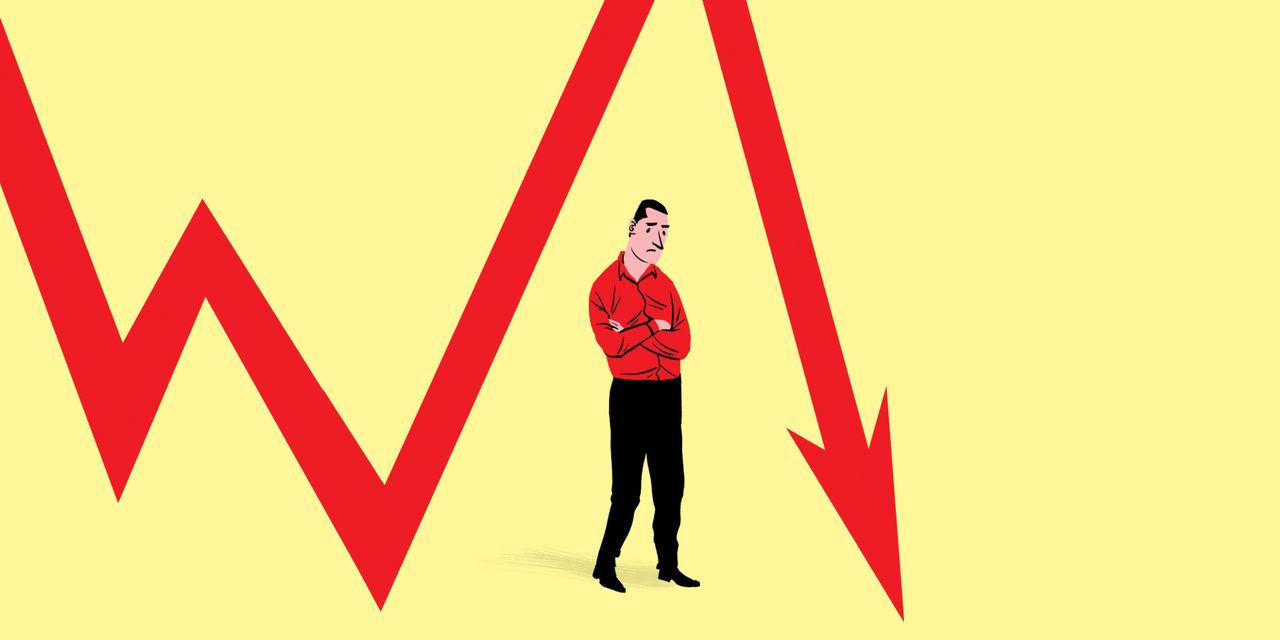
Traders frequently accuse one another of engaging in a dishonest technique known as "stop loss hunting" when they lose money. Typically, this refers to a dishonest strategy used by brokers to increase client losses and, consequently, their own profits, but it can also apply to an action made by significant market participants. It might even serve as the cornerstone of a successful trading plan. Continue reading to learn how to prevent having your stops hunted and how to take advantage of this phenomenon for a more profitable trading approach.
What is Stop Loss Hunting?
Stop loss hunting is the practise of purposefully driving the price to a point where stop orders will be triggered.
Stop loss hunting is a phrase that is frequently used to describe actual market activity, although day traders may exaggerate it to describe the price action of the market, especially when things do not go according to plan.
The line, "They got my stop loss," is frequently heard. Stop loss hunting is a counterparty risk, but in the financial markets, reality is frequently more complex. To avoid its risks, many people need a more in-depth understanding of stop loss hunting. Once they do, they can use what they've learned to their trading strategy and risk-managing open positions.
Stop loss hunting may not always create market moves, but it will undoubtedly enable traders to understand its logic and workings. Since liquidity providers are required to supply tradable prices but are not required to move them in a smooth incremental manner, the practise of stop loss hunting and the evidence it produces frequently remain matters of opinion. Stop loss hunting is like to gravity in that you cannot see it but are aware of its presence.
The largest financial firms, such as major brokers, dedicated market-making liquidity providers, and speculators, are the main targets of the "blame" for stop loss hunting. There are many complex factors that might cause a market to quickly move through a technical price level, but stop loss orders targeting specific clients are infrequently one of them.
Yes, big financial powers have the resources to temporarily tip the scales against them and drive the price of the market to a level where they anticipate many stops being placed by traders and being triggered by the movement.
Stop loss hunting is used to eliminate active positions from the market and can erode support and resistance levels that have become important points of resistance. Market makers could carry out this in order to make money and safeguard their active positions against emerging trends. Stop loss hunting affects a number of active asset classes, including forex and commodities, but it also happens in other assets where long and short positions are permitted by derivatives.
Stop losses abound in the major financial markets, and institutions using large brokerages are well aware of potential accumulation sites; even without having access to the broker's order book, they have a good notion of where client stop losses are likely to be put. Trading positions that are not balanced are discovered by brokerage firms acting as market makers, indicating that there is an incentive to close positions if there is an excessive amount of risk on one side of the trade (either long or short). But among small dealers, such ideas can cause undue concern. Although it is theoretically possible for brokers with a sizable institutional presence to go on a stop loss hunting trip, some may do so when it is judged necessary.
Why Do You Need to Worry About Stop Loss Hunting?
Stop loss hunting worries individual traders a lot because of the possible harm it could do to their open positions. Through chart analysis, open positions in the Forex market that are being traded and have built up close to important numerical levels, whether psychological or technical, can become known objectives.
For instance, if the USD/JPY currency pair's stop losses are heavily concentrated at the level of 149 and the market is trading above 150 with an active buying trend, a major institutional player like the Bank of Japan could enter the market and start selling to potentially lower the value of the currency pair. destroying short positions with a wave of selling.
Because of the potential of huge investing organisations to engage in such practises, speculators may become fearful and have less desire to buy the asset in the future.
Why do you think financial institutions will adopt this tactic? Because huge trading houses frequently demand market activity that coincides with their preferred needs and outlooks. By efficiently creating a void in the market, stop loss hunting enables them to hasten price movement in the desired direction. In doing so, they are better able to take advantage of the momentum that has been created and swiftly reach their desired price targets. By lowering the possibility of significant losses and preventing volatility from setting off a chain reaction of stop loss orders that could have an influence on their own market positioning, this technique can assist institutions in managing their own risk exposure.
The Bank of Japan's actions in October 2022 to stop pressure from USD/JPY purchasers, who are rumoured to have included brokerage firms and their larger traders, made things simpler for the BoJ and resulted in a severe selloff once speculative buyers were scared away.
- The Bank of Japan induced speculative panic, which made it simpler to sell the USD/JPY and contributed to the strengthening of the Japanese Yen.
- As a result of the BoJ's selling intervention, many investors refrained from making rapid purchases out of concern that the central bank would act once more.
Keep in mind that the notional daily trading volume for currencies is close to 5 trillion USD. Meaning. A huge market maker is more interested in influencing the general sentiment than it is in targeting single deals of most sizes. In other words, a day trader who holds a position with a nominal trade size of 500,000 to even 1,000,000 USD is not the crucial objective of stop loss hunters. A trader should use the fact that stop loss hunting can and does occur as a means to learn and help them trade later on, rather than taking the abrupt gyrations of the Forex market personally.
How Does Stop-loss Hunting Actually Happen?
The large financial houses therefore have more freedom to pursue their own endeavours by eliminating the large accumulated active stakes in an asset through stop loss hunting.
Modern institutional trading is almost entirely automated.
- By using preprogrammed algorithms, trades are executed in milliseconds or less and target short-, mid-, and long-term values depending on certain trading signals.
- Financial institutions are worried about mid-level institutions with active positions since they are causing problems and can be problematic if they contradict a market maker's directional bias and should be eradicated.
- The 'pooling' of trades by brokerages on behalf of their clients is one example of this.
Remember that large financial organisations usually trade the foreign exchange market with sizable cash positions rather than by using leverage. Due to the size of their balance sheets, they have the power to quickly change the balance of an asset by holding massive positions, but they also have the financial resources to be patient. Large trading companies have the power to quickly move a market.
Potential Secrets via Options due to Hedging and Speculation
Using options pricing as a possible indicator is a well-kept trick that day traders might employ to strategically avoid stop loss hunting. Options trading volumes and strike prices might reveal the calls and puts being used to buy and sell options contracts. Stop loss hunting may require taking into account "near the money" options, or contracts with expiration dates that are close to the asset's spot price.
These option reports are a reliable way to assess the state of the market. These prices, which institutional traders may be using to hedge their bets in the spot markets, can be seen as objectives and protection.
- Financial institutions making significant trades in the cash market are aware that they might need to keep a position due to the needs of certain clients, many of whom are companies and who are not trading for speculative purposes.
- In order to protect themselves in case something goes wrong, the big financial institutions frequently trade options in the opposite direction of their cash positions, thereby hedging their exposure risk.
Options can be used to speculate, without a doubt, but they can also be utilised as a form of insurance or protection. A day trader can have a better understanding of where huge institutions are pricing in the possibility of a market move and, consequently, price levels where potential stop loss hunting may occur, by knowing where options are priced.
Price Data Sources are Used to Calculate Stop Loss Hunting Targets
Traders need to be aware that major financial organisations programme their trading software by gathering evidence much like a detective would. Financial institutions who are aware of bias will quantify it using numerical analysis to get a slight advantage and determine which market participants are in susceptible positions. Stop loss hunting is used to eliminate rivals from the market.
It's crucial that financial institutions adapt their algorithms to account for known bias in the market brought on by anticipation of government economic data releases and company outlooks. Financial institutions are in the business of producing money, so they are constantly attempting to avoid market surprises and being on the wrong side of a significant move. They have a vast informational arsenal at their disposal, and quants are tasked with lowering operational risks in their trading models.
How to Avoid Stop Hunting by Setting a Proper Stop Loss?
Stop loss hunting can hurt fundamental traders, even those who despise technical trading strategies. One method to combat this is to use technical analysis to identify psychological barriers and perceived essential price levels, then set stop loss targets far from these crucial targeted values.
A speculator has a better chance of remaining in a trade for longer by setting a far-off stop loss away from transactional activity. But because a greater stop loss is being used, this also means that cautious amounts of leverage must be used to prevent overexposure in a single position.
A bigger stop loss could mean that more value is being bet than usual if it is being deployed away from the 'known' goal levels. Greater movements correspond to greater financial gains. A possible trade with a higher profit also carries a higher risk.
A Trading Strategy to Exploit Stop Loss Hunting
Using perceived stop loss hunting territory to target one's own take profit orders or start momentum-based "breakout" trades is another alluring idea for traders. Knowing where stop loss hunting targets will be generated and believing they will be pursued by major financial institutions opens up the possibility of placing a speculative trade using the institutions' trading power in the anticipation that prices will inevitably drift to these crucial levels.
- A trader can employ take profit orders by actively using a technical level that is thought of as a stop loss hunting ground.
- A trader might also enter a position at a projected stop loss hunting ratio, anticipating a breakout due to growing momentum.
Contrarian traders may advise you not to employ stop losses since they make it impossible to be forced out of a trade. These traders tend to be quite aggressive and well-funded. However, if you are not employing a stop loss, this is often regarded as being extremely risky since all of your money could be lost on a single trade. Only those who have zero concern for losing their trading account should even consider this possibility. Without a stop loss, a trader is taking a risk with their entire investment, and in some cases, they could even end up in the red.
Pros & Cons of a Stop Loss Hunting Trading Strategy
Stop loss hunting occurs in numerous currency and commodity pairs. Large institutional traders pay attention to pairs like GBP/USD, EUR/USD, USD/JPY, and the commodity Gold since they are aware of where there are many stop loss objectives. This aids financial institutions in managing their operations and frequently harms smaller dealers who are unaware of this fact.
However, by avoiding certain price levels or choosing to leave a market when they believe too much accumulation is producing a significant amount of targeted trading, a trader can rest more comfortably in the market.
A trader who is more aggressive can enter a market leveraging the momentum that frequently results from critical level breakouts by understanding stop loss hunting. It makes sense for a trader to utilise stop loss targets as a tool to employ take profit orders if they believe they can predict where momentum will develop or if they wish to open new speculative positions.
The biggest drawback of a stop loss hunting technique for retail traders is that you will need to get extremely adept at figuring out which support and resistance levels are likely to hold and which are likely to break because you won't be able to see the clusters of stops. This goal can keep you from taking advantage of other attractive market possibilities that occasionally present themselves.
.png?v=1)

